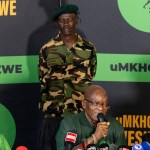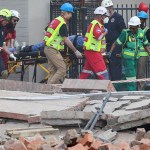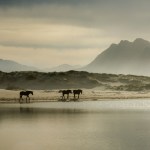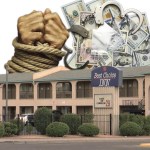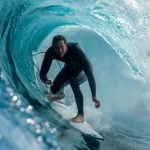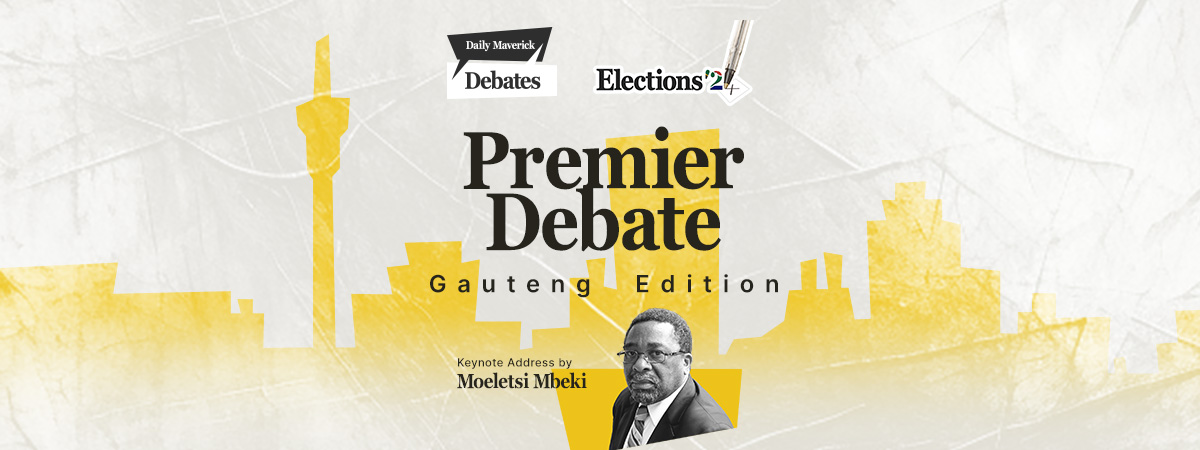THE AMERICAN NIGHTMARE
Master Blaster: Donald Trump plays with matches as the US burns
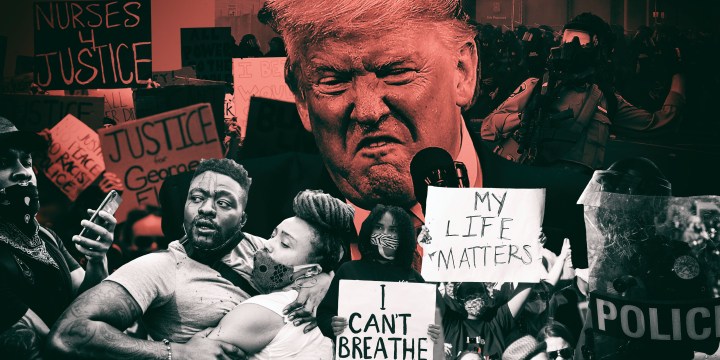
This past week has been a week to remember in the US, but certainly not in a good way, with more than 100,000 deaths from Covid-19, rioting across the country over another police killing of an arrested suspect, and a president determined — more than ever — to pick fights abroad. These current circumstances conjure up visions of the apocalypse…
“God gave Noah the rainbow sign,
No more water but fire next time”
From the African American spiritual, “Mary Don’t You Weep”, with words used as the title of James Baldwin’s classic essay about black life, “The Fire Next Time”.
“When the Lamb broke the fourth seal, I heard the voice of the fourth living creature saying, ‘Come.’ I looked, and behold, an ashen horse; and he who sat on it had the name Death; and Hades was following with him. Authority was given to them over a fourth of the earth, to kill with sword and with famine and with pestilence and by the wild beasts of the earth.” — Revelations 6: 7-8
Forty-five years ago, I spent time in Minneapolis visiting a cousin then working on his PhD in research pharmacology. The city – and its more working-class twin across the Mississippi River, St Paul, seemed equable places to live – if you didn’t mind the snow. The downtown area and its parks featured excellent museums and galleries, and there was an interesting, more avant-garde neighbourhood with small galleries, coffee shops, bars, restaurants, and book stores. I liked the city, except for the winter cold and snow borne by a wind that felt like it had come across the Canadian Great Plains directly from the North Pole and then on into Minneapolis’s streets. (In meteorological terms, it actually had.)
Minneapolis and the state of Minnesota had long had a reputation for progressive mainstream politics. Back in the late 1940s, a group of idealistic but realistic young politicians including Hubert Humphrey, Orville Freeman and Eugene McCarthy, among others, had retaken the progressive political centre with their new Democratic Farmer-Labor Party (DFL) from an old Democratic Party increasingly controlled by a near-Stalinist left.
(Perhaps the most recent, widely known DFL politician is Congresswoman Ilhan Omar, the firebrand progressive legislator and member of “The Squad”.)
Back in 1948, while still a young rebel, Humphrey had led the charge at that year’s Democratic National Convention for the inclusion of a strong party platform statement on civil rights. With John Kennedy’s victory in 1960, Freeman had led the national push to create the country’s food stamps subsidised food programme. And McCarthy had grown to deeply oppose the Vietnam War, eventually taking the fight to the 1968 primary races against incumbent President Lyndon Johnson.
(After McCarthy narrowly lost the New Hampshire primary to Johnson, 42% to 48%, he opened the space for Robert Kennedy’s run. Soon after, President Johnson announced he would not seek the second term as president. – Ed)
The state’s people had built a reputation for principled but pragmatic, honest politics, echoing the gently satirical closing words of Garrison Keillor’s longtime radio show, Lake Wobegon Days, where Keillor would sign off with the words, “Welcome to Lake Wobegon, where all the women are strong, all the men are good-looking, and all the children are above average.” And in fact, when one used the public buses, as you sat down, the people next to you, total strangers, talked with you and then took out pictures of their grandchildren to show you just how above average they really were.
But there has always been an underside to Minnesota. This included fierce wars with, and then the dispossession of resident Native Americans from land, even as Minnesota’s soldiers were fighting for the Union (and the end of slavery) in the American Civil War.
While wandering around Minneapolis’s version of Tribeca, I happened to talk with a young woman in one of the coffee bars, and after mentioning I was working in South Africa at the time, the issues of race inevitably came up in our conversation, as she noted her relationship with an African American man, a rising artist, had become the topic of far too much conversation among her relatives and friends, and with strangers alike.
And I was shown the neighbourhoods, run-down, rough, where many of Minneapolis-St Paul’s Native Americans were living. The two cities apparently had the largest urban concentration of Native Americans in America. The neighbourhoods had many of the sad social ills one expects in such a place, including far too many homeless men, sleeping rough, apparently after a night of drinking, even in winter.
Nevertheless, the murderous viciousness of the police against George Floyd with the video of it that has gone viral – the act that has now set off nearly a week’s worth of demonstrations, protests, rioting and destruction in cities all across the country – still comes a shock. To someone now living in South Africa, it has had far too many uncomfortable, appalling resonances.
First, there was the brutal way the local lockdown has sometimes been enforced in contemporary South Africa that has now led to multiple deaths, as well as flashbacks to an earlier era of police violence during apartheid. But there has also been the chain of deaths while in police custody of young black males in America over the past number of years, along with all the earlier echoes of televised scenes from some of the worst moments during the US civil rights struggle, such as the actions of the police at the Edmund Pettus Bridge in Selma, Alabama.
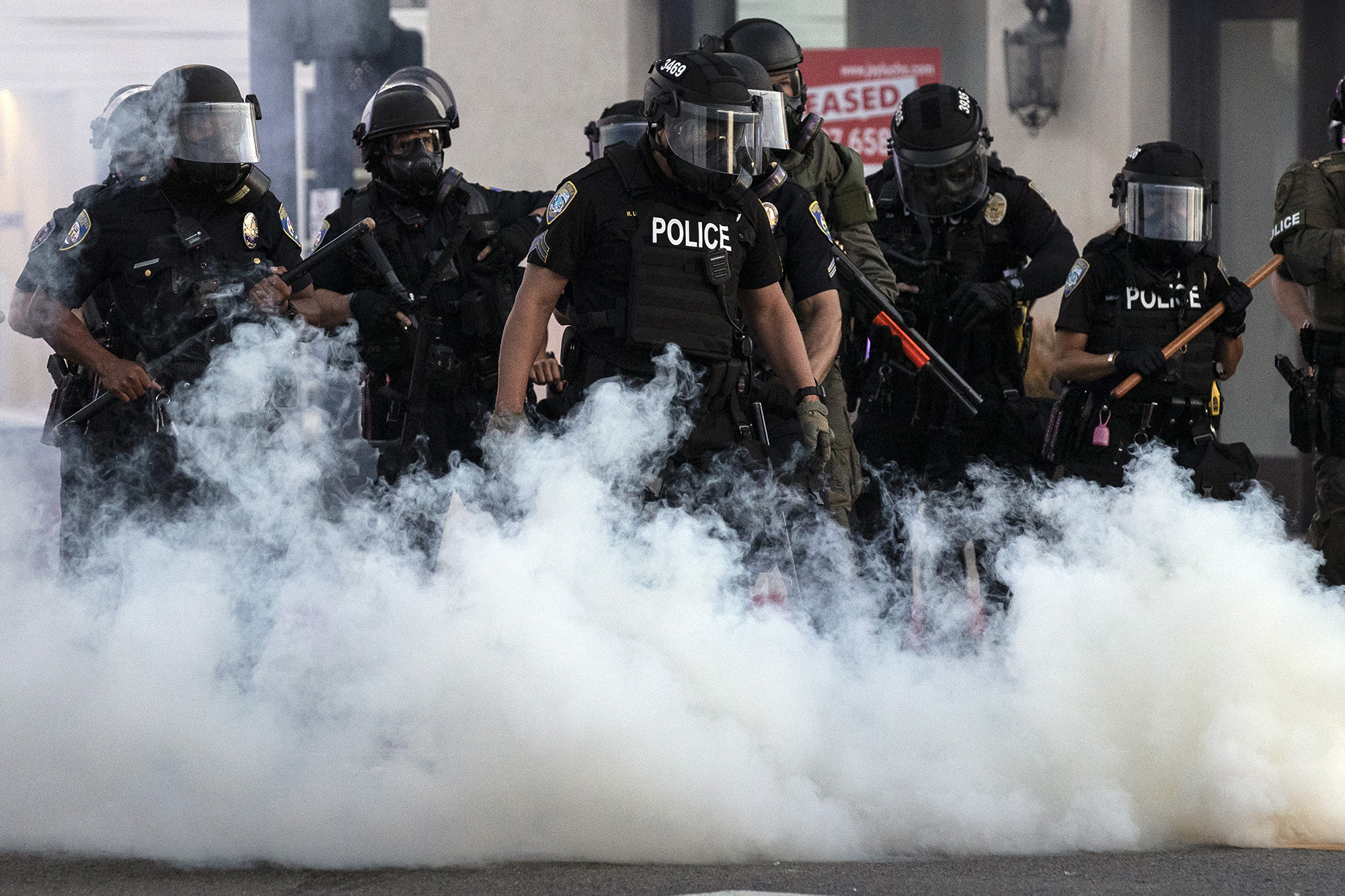
Sheriff deputies and police officers are engulfed in tear gas during a stand-off on Rodeo Drive minute away from the curfew as thousands of protesters take the street to demonstrate following the death of George Floyd, in Beverly Hills, California, USA, 30 May 2020. A bystander’s video posted online on 25 May appeared to show George Floyd, 46, pleading with arresting officers that he couldn’t breathe as an officer knelt on his neck, in Minnesota. The unarmed black man later died in police custody. EPA-EFE/ETIENNE LAURENT
By the end of the week, protests, then rioting and looting, interspersed with the usual police charges to disperse people, multiple arrests, burnt-down stores and even a police station or two, and ultimately the calling up of National Guard units to reinforce increasingly overwhelmed police, had broken out – and were continuing – in cities across the nation, from Los Angeles to New York City and Washington, DC, and many in-between. There were sometimes violent, albeit more Kabuki-esque demonstrations in front of the White House, as demonstrators clashed with police and Secret Service personnel in riot gear.
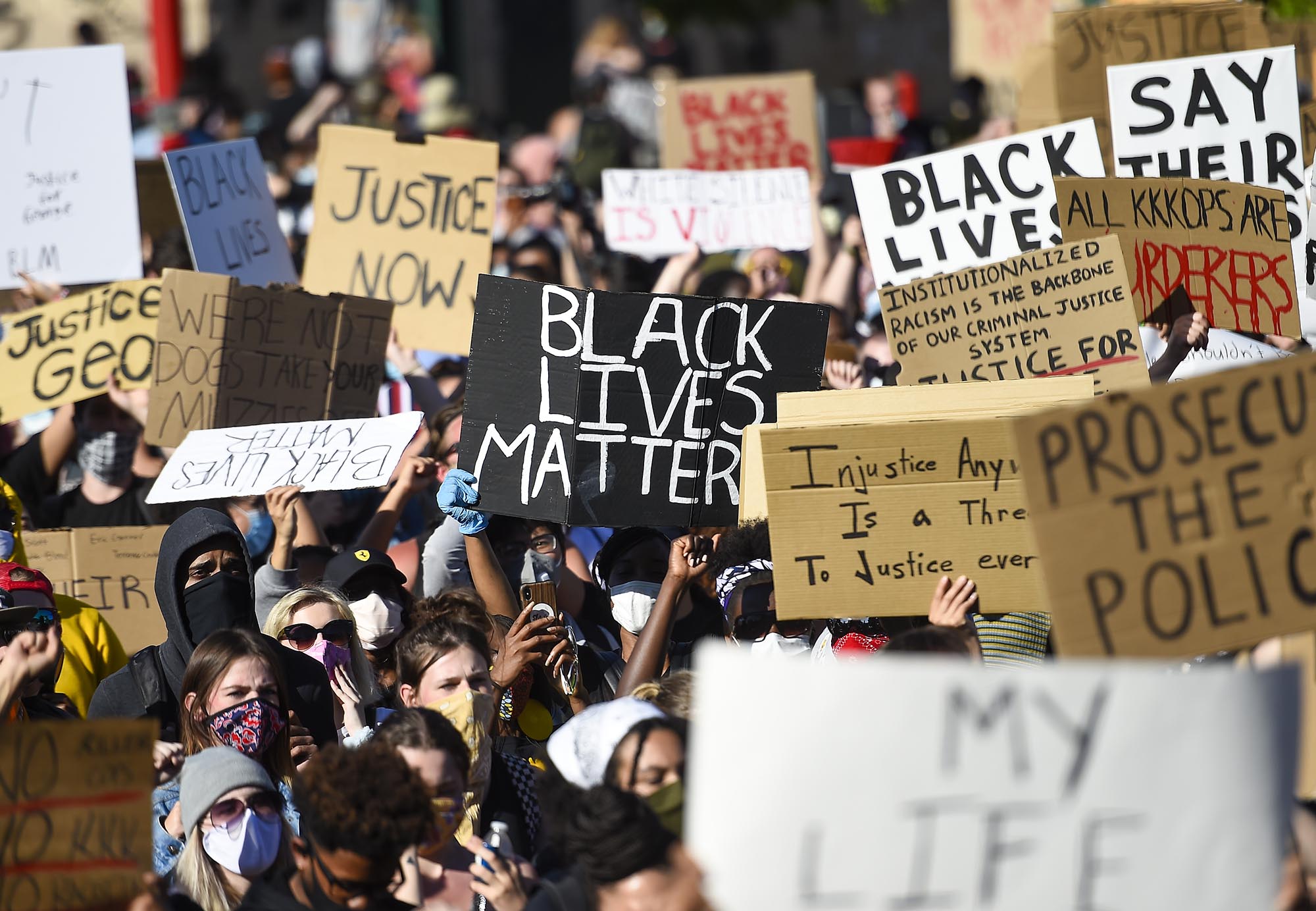
Protesters hold placards as they demonstrate in front of the Minneapolis Fifth Precinct during the fifth day of protests over the arrest of George Floyd, who later died in police custody, in Minneapolis, Minnesota, USA, 30 May 2020. A bystander’s video posted online on 25 May, appeared to show George Floyd, 46, pleading with arresting officers that he couldn’t breathe as an officer knelt on his neck. The unarmed black man later died in police custody. EPA-EFE/CRAIG LASSIG
On Saturday evening, President Trump was in the house, literally, taunting demonstrators via tweets, to face the music if they came one step closer. As the Chicago Tribune said of his words, “President Donald Trump on Saturday claimed that many Secret Service agents were ‘just waiting for action’ and ready to unleash ‘the most vicious dogs, and the most ominous weapons, I have ever seen’ if protesters angered by his response to George Floyd’s death had crossed the White House’s security fence.
“In a series of tweets hours after hundreds of demonstrators had massed outside the White House and scraped with officers in riot gear, Trump belittled them, doubted their allegiance to Floyd’s memory, said they were only out ‘to cause trouble’ and were ‘professionally managed.’ He offered no evidence to back his assertions, and the president even seemed to invite supporters to make their presence felt: ‘Tonight, I understand, is MAGA NIGHT AT THE WHITE HOUSE???’”
Trump was fresh from watching the successful launch of the privately designed and built Dragon-SpaceX rocket in Florida with two US astronauts aboard, headed to the International Space Station. Trump’s triumphant words of encouragement were clearly designed to lay claim to the rocket’s success that SA-born Elon Musk and his team had created, as a way of Trump saying the US was back, large and in charge (with him in the captain’s chair), and with the technological chops to best anybody in any fair fight.
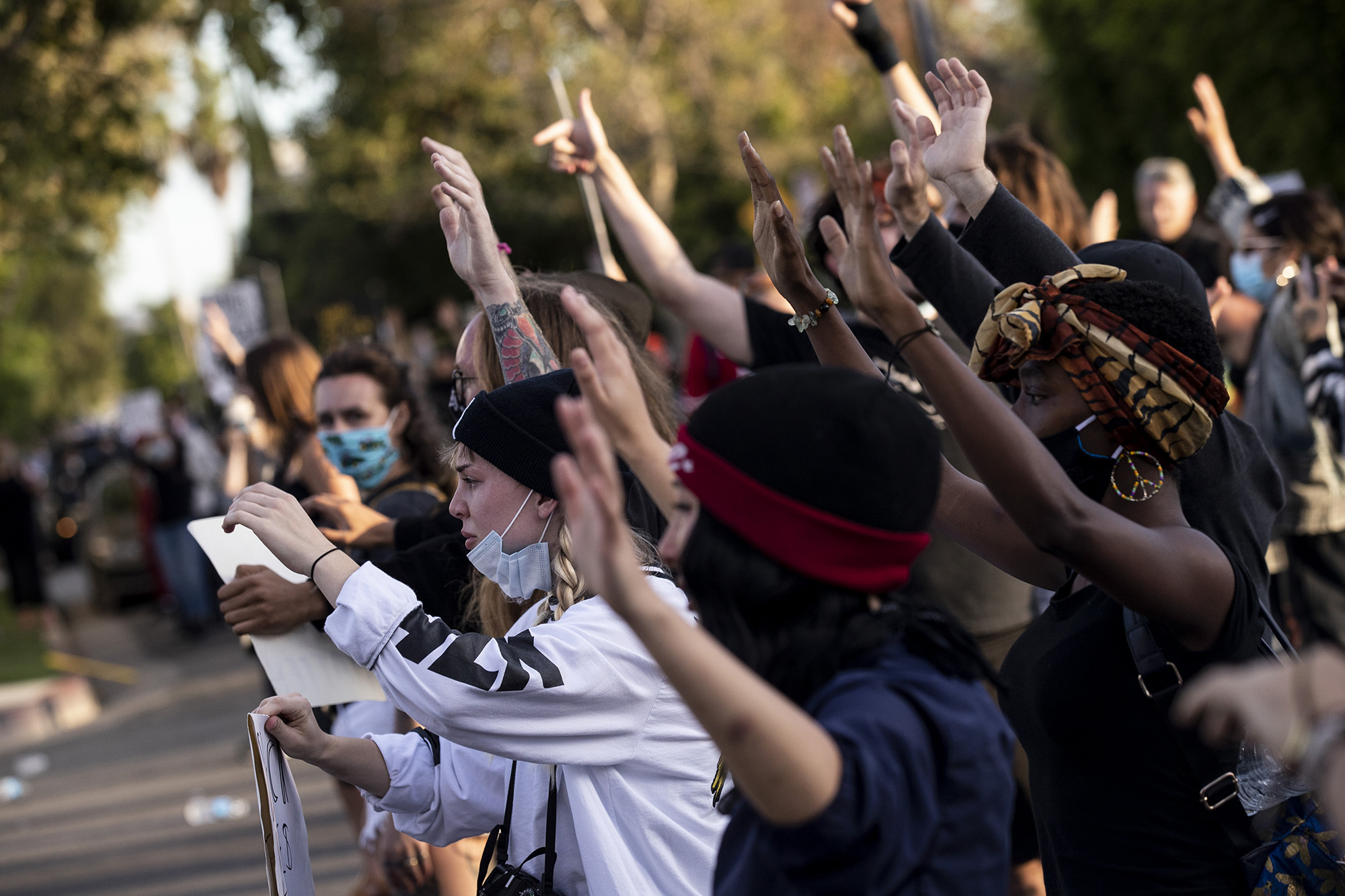
Protesters stand with their arms in the air as they are facing the police in the Fairfax neighborhood as thousands of protesters take the street to demonstrate following the death of George Floyd, in Los Angeles, California, USA, 30 May 2020. A bystander’s video posted online on 25 May appeared to show George Floyd, 46, pleading with arresting officers that he couldn’t breathe as an officer knelt on his neck, in Minnesota. The unarmed black man later died in police custody. EPA-EFE/ETIENNE LAURENT
Back at the beginning of the week, on Monday, Memorial Day, it had seemed the biggest challenges faced by the country were somehow dealing with the coronavirus pandemic and the astonishing, extraordinary economic devastation that was the result of the lockdowns across the country because of the virus’s seemingly unstoppable spread. There were more than a 1.7-million cases of infection and (now) almost 105,000 deaths and counting, in part occasioned by the haphazard decisions on lockdowns across the nation and delays at the beginning of the year in dealing with the pandemic, continuing confusion about testing regimens and the scarcity of tests and personal protective gear that was still putting healthcare workers’ lives at risk daily.
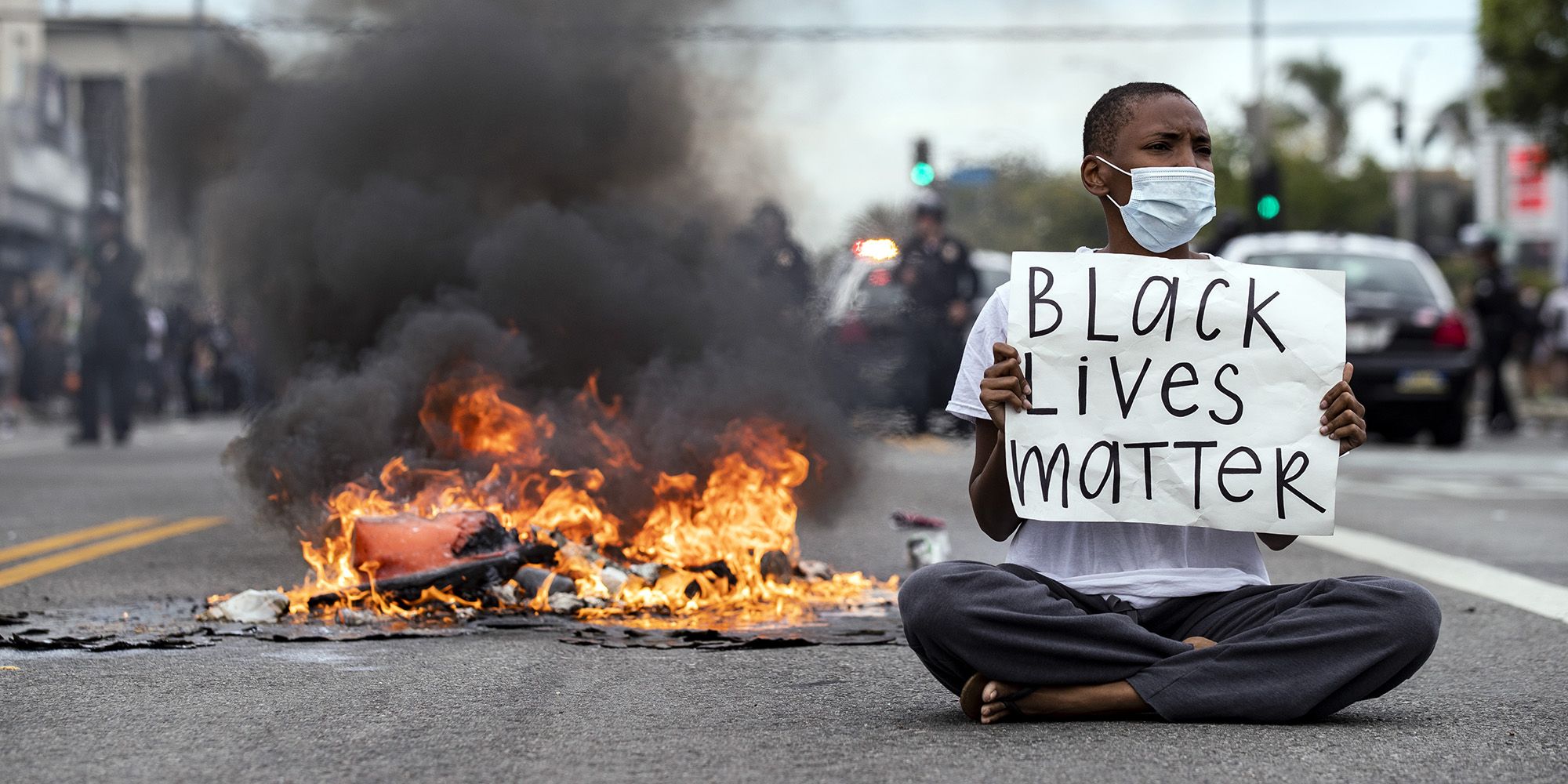
A protester holds a placard reading ‘Black Lives Matter’ during protests over the Minneapolis arrest of George Floyd, who later died in police custody, in Los Angeles, California, USA, 30 May 2020. A bystander’s video posted online on 25 May, appeared to show George Floyd, 46, pleading with arresting officers that he couldn’t breathe as an officer knelt on his neck. The unarmed black man later died in police custody. EPA-EFE/ETIENNE LAURENT
But in economic terms it was possibly even worse. There were now more than 40 million people who had applied for unemployment compensation (including this writer’s daughter), vast numbers of jobs that had simply evaporated, schools and universities shuttered and shifted over to online instruction – and a palpable sense on the part of millions that they were caught in some kind of invisible, inescapable house of horrors.
As many people bristled under these conditions and agitated for rollbacks of the shutdown orders, a growing number of states began to move toward staged rollbacks, even as public health officials and epidemiologists began warning about the second wave of infection as social distancing melted away at the country’s lakes and beaches and other spaces over the holiday weekend. Regardless, the president increasingly pushed the need to reopen the country – in a bid to be the saviour of the economy he himself had helped crash. This was in defiance of his own advisers, but at least in part in response to public acts of strong-arming by weapons-carrying gangs of thugs dressed in camouflage gear, who demonstrated at state capitals across the nation.
But then came the death of George Floyd. The aftermath to that drove even the pandemic off the front pages and the televised news channels. And Donald Trump reverted to his more usual style of attacking demonstrators, Democrats, and now, most important of all, China. His message is simple: China was the cause of it all. They cheated on the transparency of information about Covid-19; they might well have manufactured it in that lab in Wuhan; they perverted the World Health Organisation (WHO) to do their mendacious bidding; and now they were driving to destroy Hong Kong through attacks on its legal structures and quashing demonstrations. Oh, and they were again threatening the reunification – peacefully or forcibly – of that runaway province of Taiwan with mother China.
While much of the rest of the world was increasingly weary of Trumpian huffing and puffing, with their actions in Hong Kong, the Chinese government has given the Trump administration at least one way to deflect attention from the smoking rubble of their Covid-19 efforts.
That is, until Floyd’s killing brought Trumpian truculence right back into the full view.
So far, at least, the demonstrations continue and show no signs of dying out. As The Washington Post reported on Sunday:
“A day of widespread protests devolved into a night of fire and fury across the nation as tensions boiled over in dozens of American cities. Police cars and government buildings were set aflame, windows were shattered, stores were ransacked, monuments were vandalized and authorities in riot gear fired pepper pellets, tear gas and rubber bullets at demonstrators who had amassed to protest the death of a black man in police custody.
“Curfews were enacted in more than two dozen cities and the National Guard was summoned in at least 12 states and the District of Columbia as officials pleaded for peace. But mayhem convulsed the country, leaving scores of police officers and protesters injured and parts of America smoldering.
“Here are some significant developments:
“Thousands gathered in London’s Trafalgar Square in support of U.S. demonstrators, according to the Associated Press.
“Some of President Trump’s allies are urging him to address the nation about the intensifying unrest. Trump’s presumptive Democratic rival, former vice president Joe Biden, released his own statement condemning the violence that followed the in-custody death of George Floyd in Minneapolis.
“The unrest spread to cities large and small, including Ferguson, Mo., which was rocked by violent protests in 2014 after a white police officer shot and killed a young black man, Michael Brown.
“Federal buildings in the nation’s capital were vandalized, and clashes erupted for a second day between Secret Service agents and demonstrators outside the White House.
“The mayor of Richmond said a curfew will be imposed starting Sunday night after protesters targeted the city’s symbols of history — a scene repeated in Charleston, S.C.; Raleigh, N.C.; and other Southern cities.
“California Gov. Gavin Newsom (D) declared a state of emergency and deployed the National Guard to Los Angeles as violent demonstrations raged. Mayor Eric Garcetti initially resisted asking for Guard troops because he did not want to evoke memories of the 1992 Rodney King riots, but conditions continued to deteriorate in the city.
“Rep. Alexandria Ocasio-Cortez slammed New York Mayor Bill de Blasio (D) for saying he would not ‘blame’ New York City police officers who appeared to have driven their vehicle into a throng of protesters.
“Target said it was temporarily closing 175 of its stores across 13 states, including in Minnesota, where the retail giant is headquartered.
“Saturday’s protests came one day after fired Minneapolis police officer Derek Chauvin was charged with third-degree murder and manslaughter in Floyd’s death. Chauvin, who is white, was captured on video pressing his knee onto Floyd’s neck for more than eight minutes.”
Along the way over the course of the week, various local, state, and federal officials – so far without much in the way of evidence – have been charging that dangerous outsiders, left-wing agitators such as the Antifa group, and right-wing poseurs and agents provocateur, and even foreign agents have all been the responsible parties for inciting mobs, leading attacks on buildings and police, and generally making things chaotic. (In truth, the Russians and several other nations, not surprisingly, have used these actual events to accuse the US of systemic racial oppression or worse.) In one actual incident, New York City Police did arrest two young women, both white, for attempting to ignite and throw a Molotov cocktail into a van that contained police officers, although the weapon failed to ignite. But for the rest of the supposed outside influence, so far at least, officials are chasing shadows and rumours.
It is certainly conceivable a truly amoral government might even try to encourage such uproar, with an appreciation that the current chaos can be pinned on the Democrats. In that analysis, the incumbent president might be attempting to ride back into office as a “law and order” president, just as Richard Nixon had done in 1968 when a swathe of rioting and demonstrations similarly afflicted the nation. Of course, it is also plausible that the current protests are a logical outcome from the appalling state of police-civilian relations in various jurisdictions, and that the president’s words and deeds are simply making it worse, demonstrating in lurid colours his incapacity to govern effectively.
Or as Peter Baker had written in Sunday’s New York Times:
“With a nation on edge, ravaged by disease, hammered by economic collapse, divided over lockdowns and even face masks and now convulsed once again by race, President Trump’s first instinct has been to look for someone to fight.
“Over the last week, America reeled from 100,000 pandemic deaths, 40 million people out of work and cities in flames over a brutal police killing of a subdued black man. But Mr. Trump was on the attack against China, the World Health Organization, Big Tech [for Twitter for having had the effrontery to label some of his tweets subject to fact checks], former President Barack Obama, a cable television host and the mayor of a riot-torn city.
“While other presidents seek to cool the situation in tinderbox moments like this, Mr. Trump plays with matches. He roars into any melee he finds, encouraging street uprisings against public health measures advanced by his own government, hurling made-up murder charges against a critic, accusing his predecessor of unspecified crimes, vowing to crack down on a social media company that angered him and then seemingly threatening to meet violence with violence in Minneapolis.”
In an attempt to make sense of it all, a Washington-based friend sent us the following Venn diagram:
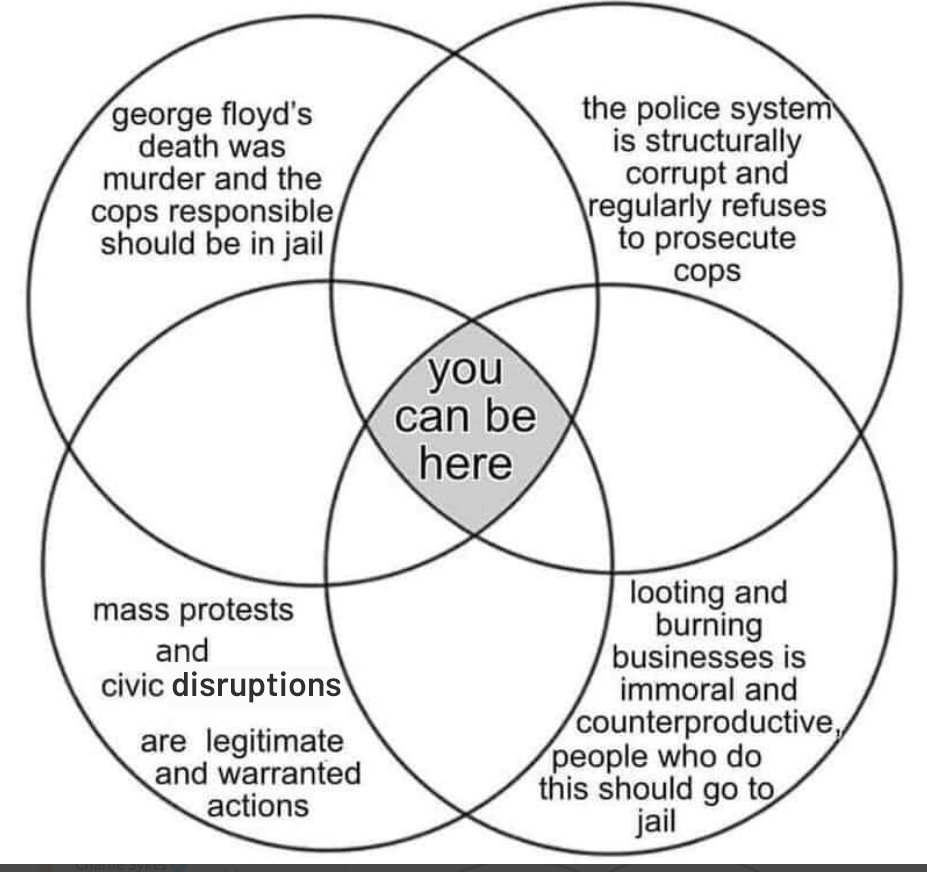
Well, maybe.
If all this is not enough, in foreign policy determinations, Donald Trump’s administration took to the bully pulpit to make formal the decision to depart from the WHO and cease funding its programmes, a decision met with much gnashing of teeth globally.
Then, the president, previously having been dissuaded from hosting the G-7 meeting at one of his golf resorts in Florida, announced he would host it at the presidential retreat at Camp David. Whereupon, German Chancellor Angela Merkel announced that due to the Covid-19 pandemic, she would not be attending, amidst muttering from some other of the usual attendees that seems to mean they might not, either.
First trying to hold it in June, the president is now pushing for a date closer to the UN General Assembly meeting in the early autumn, prior to the annual G20 meeting in late November in Saudi Arabia. But that date also has problems, if for no other reasons than it would push world leaders to be absent from their nations for a considerable portion of their time in one compressed period, as well as the obvious fact that Trump might well be a lame-duck, defeated-for-re-election president by then, as the US general election takes place on 3 November. Trump also wants to include Russia in the G7 he would host, and that has European national leaders understandably unhappy, since Russia has been outside the tent since it annexed Crimea in 2014.
All of these many difficulties are now taking shape – Covid-19 pandemic, rioting across the nation, unhappiness with allies, and a war of insults with China – even as the most recent polling as reported in Sunday’s Washington Post shows that at this early time, nationally, the incumbent president is down 10% below the Democratic Party’s challenger, former vice-president Joe Biden.
For many Americans, however, they just hope to survive the pandemic; find a job again; be able to attend church occasionally; enjoy the simple pleasures of life again; and avoid hearing about yet more foreign disasters – all inflicted upon the nation by a president who seems more like he wants to lord over another television game show than concentrate on a deeply fractured nation in great pain and anguish.
But what could Donald Trump say to his nation that would put hearts at ease, minds at rest, and lead the nation away from catastrophe?
Indeed, it is hard to even imagine such a speech at this point. DM



